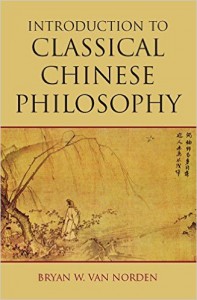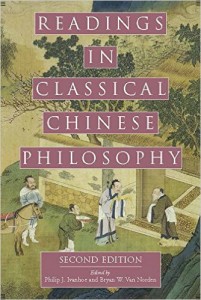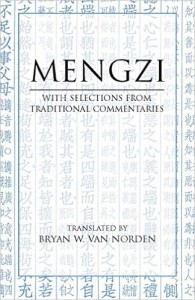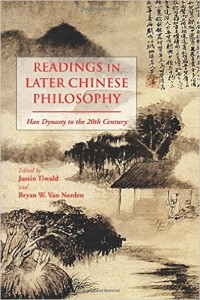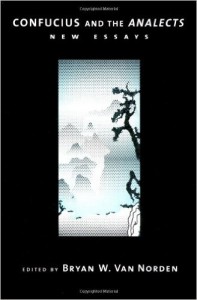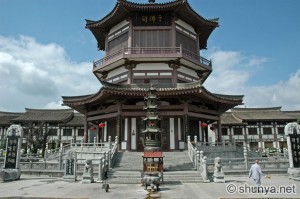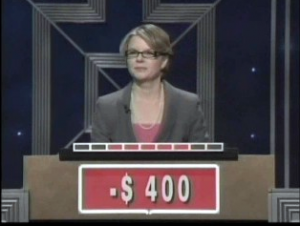This is a review of Iris Murdoch’s novel, The Nice and the Good (1968).
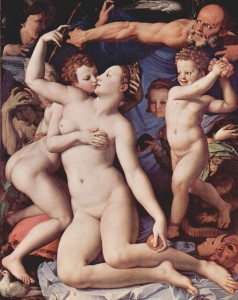 Iris Murdoch (1919-1999) was one of the greatest English novelists of the 20th century, and also an important figure in philosophy. In fact, she was a professor of philosophy at Oxford, and her collection of essays The Sovereignty of Good(1970) continues to stimulate discussion. Her novels reflect her philosophical views, but they are largely devoid of technical terminology. (A pedantic character in this novel uses the expression “sense datum” in conversation with a friend, who immediately mispronounces it as “sense of datum” [273].) Murdoch’s most fundamental claim is that humans are, by nature, deeply narcissistic. We are able to break out of our natural preoccupation with ourselves only through genuine love, be it love of beauty or love of what is genuinely good in another person. The characters in this exquisitely written and engagingly complex novel illustrate the various ways in which love can manifest itself, and the tension between that love and our selfishness.
Iris Murdoch (1919-1999) was one of the greatest English novelists of the 20th century, and also an important figure in philosophy. In fact, she was a professor of philosophy at Oxford, and her collection of essays The Sovereignty of Good(1970) continues to stimulate discussion. Her novels reflect her philosophical views, but they are largely devoid of technical terminology. (A pedantic character in this novel uses the expression “sense datum” in conversation with a friend, who immediately mispronounces it as “sense of datum” [273].) Murdoch’s most fundamental claim is that humans are, by nature, deeply narcissistic. We are able to break out of our natural preoccupation with ourselves only through genuine love, be it love of beauty or love of what is genuinely good in another person. The characters in this exquisitely written and engagingly complex novel illustrate the various ways in which love can manifest itself, and the tension between that love and our selfishness.
The central narrative of the novel is set in motion by the death of Radeechy, a civil servant who has apparently committed suicide in his office at work, but without leaving any suicide note. Since Radeechy had access to classified information, the head of the office, Octavian Gray, assigns his subordinate John Ducane to investigate the death, and confirm that there is no security risk. Ducane is a talented, dedicated man, but one with a streak of “strict low church Glaswegian Protestantism,” which left him with “a devil of pride, a stiff Calvinistic Scottish devil, who was quite capable of bringing Ducane to utter damnation” (78). Of course, Radeechy’s suicide will turn out to be a complex matter, and the plot is quite engaging. Several times while reading I spontaneously muttered “Oh no,” out loud. But this is really a novel of characters, driven by the web of personal relationships that radiate out from Ducane and Octavian. As in any great novel, the characters just seem “right.” They are more real than real people, the way Sherlock Holmes or Michael Corleone seem to us. There is no easy way to summarize the cast of characters without sounding breathless, so bear with me for a moment.
Octavian and his wife Kate are wealthy, with a small estate in the countryside outside London. Ducane is, in addition to being Octavian’s subordinate at work, a family friend, so he often visits the Gray household, which supports a menagerie of people. (One of the aspects of the novel that makes it intriguing for American readers is seeing a mode of life that we have no analogue for, and that perhaps no longer exists in England either.) A family friend, Mary Clothier, lives at the house and helps out, almost like a servant. She is a widow, and is in love with Willy Kost, a Holocaust survivor who lives in a cottage, away from the main house. However, Willy seems too emotionally damaged to reciprocate Mary’s love. Mary’s son, Pierce, has grown up in the house. Pierce is infatuated with Barbara, the daughter of Octavian and Kate. She has just returned from finishing school in Switzerland, having blossomed into a nubile young lady, but she treats Pierce with callous disdain. At some level, Barbara realizes that she is being cruel to Pierce, but she is having trouble navigating the loss of innocence that becoming an adult entails: “When I was younger, when I read in the papers and in books and things about really nasty people, bad people, I felt so completely good and innocent inside myself, I felt that these people were just utterly different from me, that I could never become bad or behave really badly like them. …I’m afraid it’s all turning out to be much more difficult than I expected” (63). Another frequent visitor to the Gray household is Paula, a brilliant classicist who has a pair of preternaturally bright, pre-pubescent twins, Edward and Henrietta. Paula is divorced from Richard Biranne, who works in the same office with Octavian and Ducane. Biranne is known to be a rake, so everyone assumes that Paula divorced him. In fact, Biranne’s vices were part of his appeal to Paula: “Chaste Paula, cool Paula, bluestocking Paula, had found in her husband’s deviously lecherous nature a garden of undreamt delights” (147). The cause for the divorce was actually Paula’s affair with another man, Eric Sears, which ended so disastrously that Eric fled the country. But Eric has written that he is coming back. Paula does not want him to return, and she is now in a whirlwind of uncertainty about how to deal with him.
Ducane himself is pursuing a relationship with Kate Gray. This relationship is not an affair as we would think of it, though. It is more like a Platonic love in the truest sense of that term, and the two never do more than kiss: “The wonderful thing about Kate was that she was unattainable; and this was what was to set him free forever” (104). Moreover, Octavian is fully aware of Ducane’s relationship with his wife. In fact, we learn that Kate and Octavian are titillated by her flirtations with other men, so much so that discussing it is part of their foreplay. Ducane’s relationship with Kate is complicated by the fact that Ducane himself has been trying to end a relationship with Jessica, an art teacher much younger than himself. Jessica’s “integrity took the form of a contempt for the fixed, the permanent, the solid, in general ‘the old’, a contempt which, as she grew older herself, became a sort of deep fear. So it was that some poor untutored craving in her for the Absolute, for that which after all is most fixed, most permanent, most solid and most old, had to express itself incognito” (84). Ducane became for her that Absolute, and she loves him to the point of idolatry. However, Ducane does not reciprocate her love. Ducane himself is, in many ways, a good man, but he faces “one of the great paradoxes of morality, namely that in order to become good it may be necessary to imagine oneself good, and yet such imagining may also be the very thing which renders improvement impossible either because of surreptitious complacency or because of some deeper blasphemous infection which is set up when goodness is thought about in the wrong way” (77). Well, that will do for now. There are more characters, but the preceding are most of the important ones, and the others I cannot explain without giving away plot points.
As its title suggests, one of the themes of the novel is the distinction between being nice and being good. Ironically, even though the setting of the story is so quintessentially English, this particular theme is an especially important lesson for us Americans to learn. Someone once said that the true religions of the American people are optimism and denial. We so often confuse being “positive,” “nonjudgmental,” “easy to get along with” – in a word, “nice” – with being a good person. But the two are not in any way the same. Kate is very nice, but that niceness has an intrinsic element of falsity. Ducane says, “Her idea is that our relationship is to be simple and sunny, and simple and sunny I must faithfully make it to be” (138). If the Devil exists, he is no doubt very nice: all the better to seduce us into wrongdoing. Good people, in contrast, are sometimes gruff, sometimes blunt, sometimes cruel in order to be kind. (Contrast the television characters House and Chase. Which is a nicer person? Which is a better person?) Murdoch also teaches us that to be good is not to be perfect. Willy Kost rebuffs Barbara’s request to tutor her: his motive is good, but it is good because he is aware he must protect her, and himself, from other motives that are not good (182-185).
If there is any flaw in this jewel of a novel, it is that its ultimate conclusion is perhaps overly sanguine. This might sound like a strange critique of a novel so focused on human frailty in the face of temptation. The novel is filled with dalliances. Sometimes they have catastrophic consequences, but one is left with a sense that this is inevitable, and everything will turn out fine as long as we forgive each other: “All we can do is constantly notice when we begin to act badly, to check ourselves, to go back, to coax our weakness and inspire our strength, to call upon the names of virtues of which we know perhaps only the names. We are not good people, and the best we can hope for is to be gentle, to forgive each other and to forgive the past, to be forgiven ourselves and to accept this forgiveness, and to return again to the beautiful unexpected strangeness of the world” (198-199). We humans are just as weak, and forgiveness just as beautiful as the novel suggests, but one wonders whether these truths have become rationalizations that are ultimately enervating. As Willy warns someone, “…in hell one lacks the energy for any good change. This indeed is the meaning of hell” (283). (Murdoch’s own personal life perhaps illustrates this danger. See the moving film Iris [2001].)
One of the wonderful things about Murdoch was her openness to religious traditions as sources of spiritual inspiration, whether one is a believer or not. So it is not out of place to end this review by recalling that Jesus saves the adulteress from being stoned to death by challenging the crowd, “Let he who is without sin cast the first stone” (the forgiveness that comes with love). But let us also not forget that his final words to her are, “Go, and sin no more” (the strictness that comes with the law).







